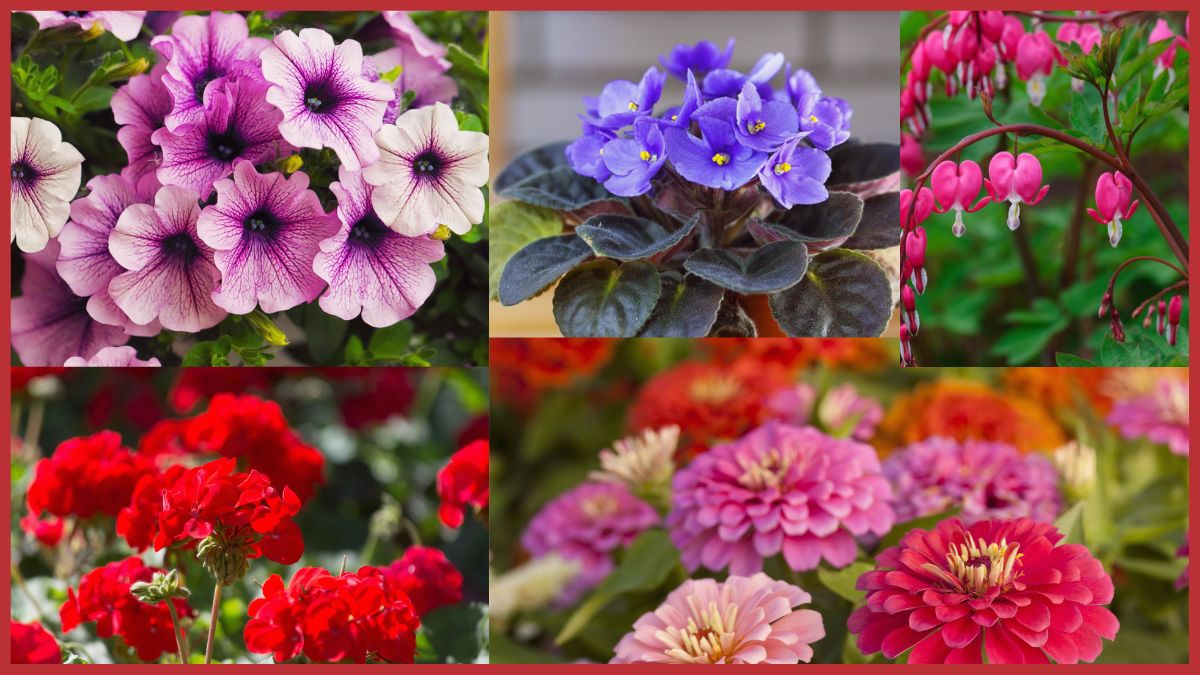Clay soils are a great place to grow plants, but they need some special care. Here are five plants that will thrive in a clay soil border:

1) African violets
2) Petunias
3) Geraniums
4) Zinnias
5) bleeding hearts
The best five plants for a clay soil border
1. Lavender (Lavandula angustifolia)
Lavender is a classic choice for clay soil borders, as it is both drought and heat tolerant. It also has a beautiful fragrance that will add a touch of luxury to your garden.
2. Roses (Rosa spp.)
There are many different varieties of roses that will thrive in clay soil, from climbing roses to bush roses. They are relatively easy to care for and will provide your garden with colour and interest for many years.
3. Geraniums (Geranium spp.)
Geraniums are another excellent choice for clay soil borders as they are easy to grow and maintain. They come in a variety of colours and can add a real splash of colour to your garden.
4. Hydrangeas (Hydrangea macrophylla)
Hydrangeas are perfect for adding some summer colour to your clay soil border. They prefer moist soils so you will need to water them regularly, but they are otherwise relatively low maintenance.
Tips for planting in clay soil
Clay soil can be a bit of a challenge to work with, but it doesn’t have to be! With a few tips and tricks, you can turn your clay soil into a beautiful garden. Here are some tips for planting in clay soil:
1. Improve your soil’s drainage: One of the biggest problems with clay soil is that it doesn’t drain well. This can lead to waterlogged plants, which can then succumb to fungal diseases. To improve drainage, add organic matter such as compost or manure to your soil. You can also create raised beds or plant on mounds to further improve drainage.
2. Avoid compaction: Clay soils are easily compacted, so it’s important to avoid walking on them when they’re wet. If you must walk on them, use boards or planks so that you distribute your weight evenly. Also, make sure you loosen the soil before planting by digging with a spade or hoeing.
3. Choose the right plants: Not all plants do well in clay soils; in fact, some will actually suffer if they’re grown in these conditions. When choosing plants for your garden, make sure to select ones that are tolerant of heavy soils (look for “clay” in the plant description). Some good examples include daylilies, black-eyed Susans, and hostas.
4., Amend your soil properly: As we mentioned above, adding organic matter is key to improving clay soils; however, it’s important that you amend the soil correctly so that your plants will get the nutrients they need without being “burned.” Incorporate organic matter into the top 8-12 inches of soil; any more than that and you run the risk of damaging roots when you till . too deep
How to improve clay soil
Clay soil is a type of soil that is made up of very small particles. These particles are so small that they can easily become compacted, which can make it difficult for plants to grow in. If you have clay soil in your garden, there are a few things that you can do to improve it.
One of the best ways to improve clay soil is to add organic matter to it. Organic matter will help to break up the clay particles and make them more porous. This will allow air and water to penetrate the soil more easily, which will be beneficial for plant growth. You can add organic matter to your clay soil by adding compost or mulch.
Another way to improve clay soil is to aerate it on a regular basis. Aerating the soil helps to loosen up the compacted clay particles and allows air and water to reach the roots of plants more easily. You can aerate your clay soil by using a garden fork or an aerator tool.
If you have heavy clay soils, you may also want to consider amending them with sand. Sand will help to lighten the texture of the soil and make it easier for plants to grow in. Be sure not too add too much sand, as this could alter the pH of the soil and make it unsuitable for some plants.
By following these tips, you can improve your clay soils and make them more hospitable for plant growth
The benefits of planting in clay soil
There are many benefits to planting in clay soil. For one, clay soil is packed with nutrients that plants need to thrive. Clay soil also holds moisture well, which is ideal for plants that require a lot of water. Additionally, clay soil warms up quickly in the springtime, allowing plants to get a head start on the growing season. Finally, clay soils tend to be very dense, meaning they provide excellent support for plant roots.
The best time to plant in clay soil
Clay soil can be difficult to work with, but with the right preparation it can be a great foundation for your garden. The best time to plant in clay soil is in the fall, after the hot summer months have passed. The cooler temperatures and increased rainfall help to break up the clay and make it easier to work with.
Before you start planting, it’s important to amend the soil with organic matter. This will help improve drainage and aeration, two things that are essential for healthy plant growth. You can add compost, manure, or even just some old leaves or grass clippings. Just make sure whatever you use is well-rotted so that it doesn’t rob your plants of nitrogen as it breaks down.
Once you’ve amended the soil, you’re ready to start planting! Fall is a great time to plant most vegetables, as well as perennials and shrubs. With proper care and attention, your garden will thrive in no time.
How to care for plants in clay soil
Clay soil is a type of soil that is made up of very fine particles. It can be difficult to work with, but it can be very rewarding. Here are some tips on how to care for plants in clay soil:
– Amend the soil with organic matter. This will help to improve the drainage and structure of the soil.
– Water plants deeply, but less often. Clay soils tend to hold onto water, so you don’t need to water as often as you would with other types of soil. However, when you do water, make sure to give the plant a deep soaking so that the roots can reach down into the moisture.
– Be patient. Clay soils can be slow to warm up in the spring, so don’t be too eager to plant your garden too early. Wait until the soil has had a chance to warm up before planting anything sensitive to cold temperatures.
The best way to mulch clay soil
Clay soil can be a bit of a challenge to work with, but it can be done. One of the best ways to mulch clay soil is to use organic matter. This will help to break up the clay and make it more manageable. You can also add some sand to the mix, which will help with drainage.
The best fertilizer for clay soil
Clay soil is one of the most common types of soil in the world. It is also one of the most difficult to work with. Clay soil is very dense and compact, which makes it difficult for water and air to move through it. This can make it hard to grow plants in clay soil, as they may not be able to get the nutrients they need.
One way to improve clay soil is to add organic matter to it. Organic matter helps break up the clay particles and makes it easier for water and air to move through the soil. compost or manure are good organic amendments for clay soil. You can also try adding some sand to your clay soil, which will help loosen it up a bit.
If you have clay soil, there are some special considerations you need to take when fertilizing your plants. Because clay soils are so dense, they can easily become compacted if you use too much fertilizer. This can make it even harder for water and nutrients to reach your plants’ roots. It’s best to use a light hand when applying fertilizer to clay soils, and only apply it when your plants are actively growing.
Also Read:
- How To Propagate Desert Rose?
- Best Flowers for the Vegetable Garden
- How to Grow Morel Mushrooms in a Greenhouse
- How Fast Does Bamboo Grow
- How to Use Bone Meal Fertilizer


1 thought on “Five Plants For a Clay Soil Border”